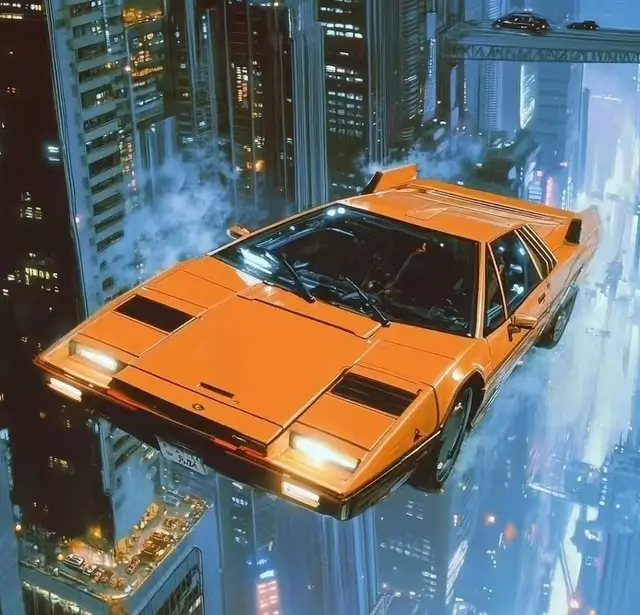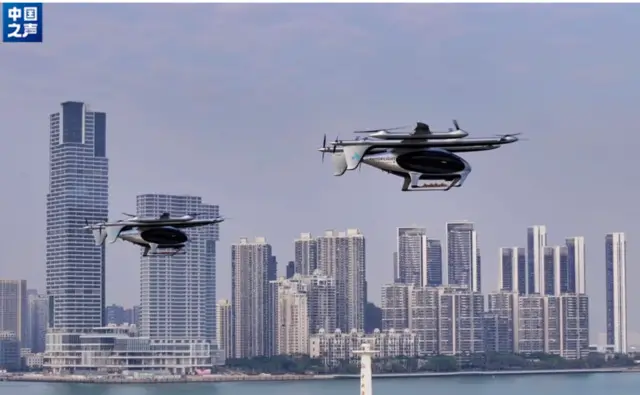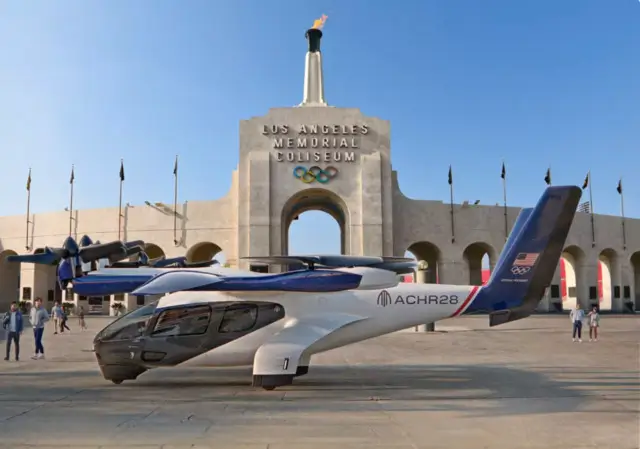Air Taxis Are Coming: Will You Be Flying to Work Soon?
When you were a kid, you wrote in your diary:"In the future, people will travel underground super fast, and flying cars will zoom through the sky. Long trips will take just minutes."

The underground part came true long ago — we've had subways for over a century.
But what about flying cars?
Actually, in just a few years, regular people might commute by air using electric air taxis. And now some cities are already testing them for daily transportation.
So, what exactly are air taxis, how close are we to riding a flying taxi, and why does this technology matter? Let's take a look.
What Exactly Is an Air Taxi?
Let me explain it simply. think of air taxis as electric sky Ubers. Unlike helicopters—which guzzle fuel, roar noisily, and cost a lot—these eVTOLs (electric vertical takeoff and landing) are designed for quiet, affordable urban travel:
How they fly:
Battery-powered motors spin multiple propellers for lift and thrust. No runways needed, piloted or autonomous.
How Air Taxis Keep You Safe:
Redundant Systems:
Redundant systems mean if one motor fails, backups kick in instantly. For example, the EH216 of EHang adopts a multi-rotor and distributed electric propulsion configuration. The 16 propellers are driven by 16 independent motors installed on 8 arm frameworks.
Air taxis have backup motors, rotors, batteries, and control units. If one fails, another takes over instantly.
Smart Autopilot:
Advanced systems help control height, balance, and landing smoothly.
Ground Monitoring:
A ground control center tracks each flight in real time and can step in if problems arise.
Emergency Measures:
Equipped with emergency brakes, backup batteries, and rescue alerts to ensure a safe landing during power loss or accidents.
Beyond only air taxi:
Some can be modified into emergency medical rescue aircraft or cargo transport aircraft.
Speed: Generally have a cruising speed of 100-200 mph (160-320 km/h).
Who's Building Air Taxis & Where Are They Launching First?
The global race to launch air taxis is heating up, with companies from China, the U.S., Germany and beyond investing billions into this emerging industry.
Here are some of the leading players:
EHang — Autonomous passenger drone pioneer from China.
EHang has conducted successful test flights in Guangzhou, Xi'an, Qatar and so on.Has approval from Chinese regulators for commercial use.

Volocopter — German eVTOL air taxi for urban mobility.
Volocopter is THE FIRST to bring electric air taxis to Europe.
VoloCity air taxis will be the first internationally certified eVTOL aircraft.
Joby Aviation — U.S. electric air taxi with long range.
Joby has partnered with Delta Air Lines and Uber to bring its service to the US and expects Los Angeles and New York City to be launch markets.
Service is planned to start shortly after Joby receives type certification from the Federal Aviation Administration.
Archer Aviation — Urban eVTOL developer backed by United Airlines.
Archer Aviation Inc. and Signature Aviation announced the signing of an MOU, giving Archer access to takeoff and landing sites in major metropolitan areas across the U.S. and globally.
Archer will introduce the company's Midnight to Los Angeles.

Midnight is Archer's flagship aircraft. It is able to flying up to 100 miles on a single charge with a cruising speed of around 150 mph, Midnight represents a fundamental shift in how cities might address the challenges of scale, sprawl, and traffic congestion.
In addition to being the exclusive partner of the Olympic Games and the US team, Archer will also set up "vertical take-off and landing airports" at major venues. The Midnight aircraft will provide travel services for "VIPs, fans and athletes", and offer emergency service support.
These companies are not only building the vehicles — they're also working closely with governments to create the regulatory framework and infrastructure needed for safe, large-scale operation.
Are you already eager to ride an air taxi? So, when and where can you actually ride one?
When And Where Can You Ride an Air Taxi — And How Much Will It Cost?
Before 2028, air taxis may be commercially operated on a large scale, and in some places, people can even experience them now.
Now several cities are already planning to roll out air taxi services.
Cities Leading the Charge:
Los Angeles, USA Singapore Shenzhen, China Dubai, UAE Sydney Sao Paulo, etc.
How Much Will It Cost?
Early estimates suggest prices will start at around 70–150 per ride, $2 to $11 per mile, depending on distance and demand.
In China, the price of taking an "air taxi" has not been fully determined yet, but it is expected to be around 3 to 7 yuan ($0.5-$1) per kilometer. The fare for a single person may be between 200 and 300 yuan( $30-$40 ), which is much cheaper compared with other countries.
That may sound expensive now, but as more units are produced and usage grows, prices are expected to drop — possibly even close to the cost of a premium Uber or Lyft ride.
Don't think that air taxis are only for the wealthy — they matter to everyday people too. They're quietly changing jobs, wages, and the way we travel.
Why Air Taxis Matter: Low-Emission Travel, New Jobs, and More
Air taxis aren't just futuristic gadgets — they represent a major shift in how we think about urban transportation, economic development, and environmental sustainability. Moreover, many people will benefit from it.
Green Mobility for Smarter Cities
Since most eVTOLs are powered by electricity, they produce zero emissions during flight — making them a clean alternative to gas-powered vehicles.
Many cities see air taxis as a key tool for reducing traffic congestion and cutting carbon emissions.
Job Creation Across Industries
The rise of air taxis will create entirely new job categories, including:
eVTOL pilots and operators
Maintenance engineers
Flight control specialists
Training schools for future pilots
Vertiport construction and management
This means not just faster commutes, but also new career opportunities in aviation and tech.
Will Air Taxis Replace Traditional Taxis?
From my perspective, it's hard to say — but as costs come down and accessibility improves, it's not unthinkable that air taxis could eventually complement traditional ridesharing services, especially for longer trips or time-sensitive journeys.
So what do you think about it ?
Would you choose to fly instead of sit in traffic?
Final Thoughts: A New Era of Human Mobility Is About to Begin
Air taxis are no longer just dreams from childhood notebooks. They're real, they're coming soon, and they're set to transform the way people travel and expand human reach.
Just Imagine this:
Expanding human space: Commuting 50 miles to work from a mountain town.
Survival scalability: Delivering vaccines or supplies during disasters via cargo eVTOLs.
One thing's certain: Just a few years later, looking up for a ride will be as natural as hailing a cab. The sky is opening—and it's closer than you think.


 More Popular Reports
More Popular Reports
-
 AI-Generated Influencers Rake in $$$, Here's How Normal People Can Win Real Moneymake money with AI AI influencers virtual influencer generative AI AI avatar influencer marketing passive income
AI-Generated Influencers Rake in $$$, Here's How Normal People Can Win Real Moneymake money with AI AI influencers virtual influencer generative AI AI avatar influencer marketing passive income -
 Why Everyone Is Obsessed with Labubu Right Nowwhy is Labubu so popular Pop Mart blind box craze Labubu auction price Labubu buying guide
Why Everyone Is Obsessed with Labubu Right Nowwhy is Labubu so popular Pop Mart blind box craze Labubu auction price Labubu buying guide
 Instagram
Instagram

 Share
Share
